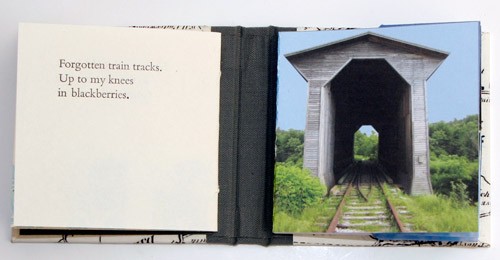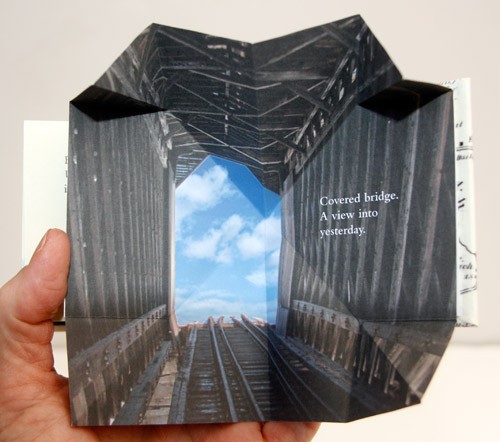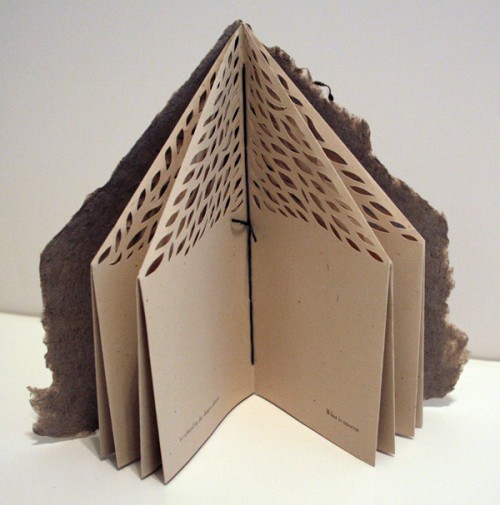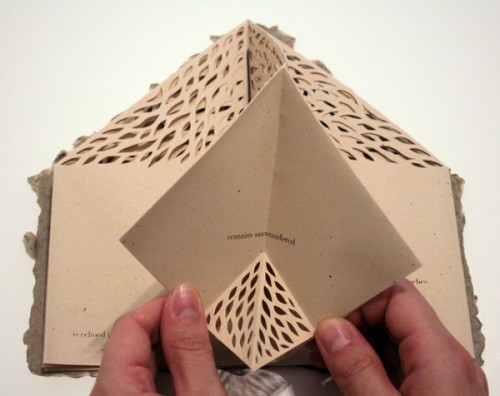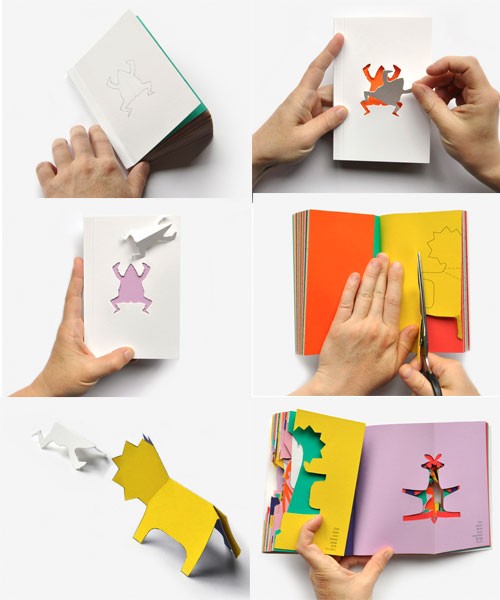I’ve finished letterpress printing my book, trimmed & folded the pages, and sewn the signatures. The paper is thick enough that I had to use 2 signatures (but only one sewing — see this neat trick here). I’ve printed enough pages for an edition of 30, knowing that I’ll really only get 25 and a display copy or two, when all is said and done. I’ve already cut one signature too short and another page got a smudge on it that I can’t remove, so I’m down to 28. Here’s the pile of signatures, all neatly sewn…
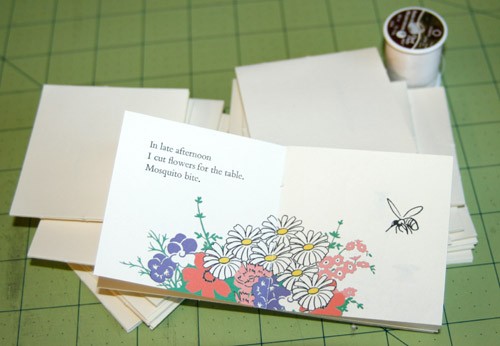

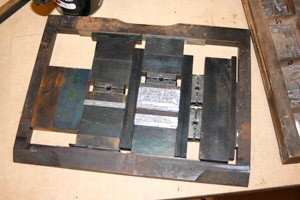 I’m in the middle of hand-setting the haiku for my current book production. I’m printing the pages 2-up. There’s 7 haiku, the title page and the colophon (that’s the title page and colophon all laid out in the photo to the left). Not really very much type, but it’s required a lot of concentration. I get one chance to get the spelling right, and notice if, for instance, I used the wrong space width between words. When I print text from photopolymer, which I set on the computer in InDesign or Illustrator, it seems I have a lot more time to check myself before getting the plates made — not to mention the spell checker!
I’m in the middle of hand-setting the haiku for my current book production. I’m printing the pages 2-up. There’s 7 haiku, the title page and the colophon (that’s the title page and colophon all laid out in the photo to the left). Not really very much type, but it’s required a lot of concentration. I get one chance to get the spelling right, and notice if, for instance, I used the wrong space width between words. When I print text from photopolymer, which I set on the computer in InDesign or Illustrator, it seems I have a lot more time to check myself before getting the plates made — not to mention the spell checker!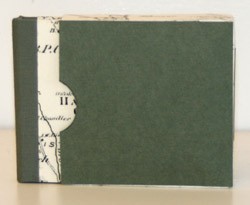 I liked the
I liked the 